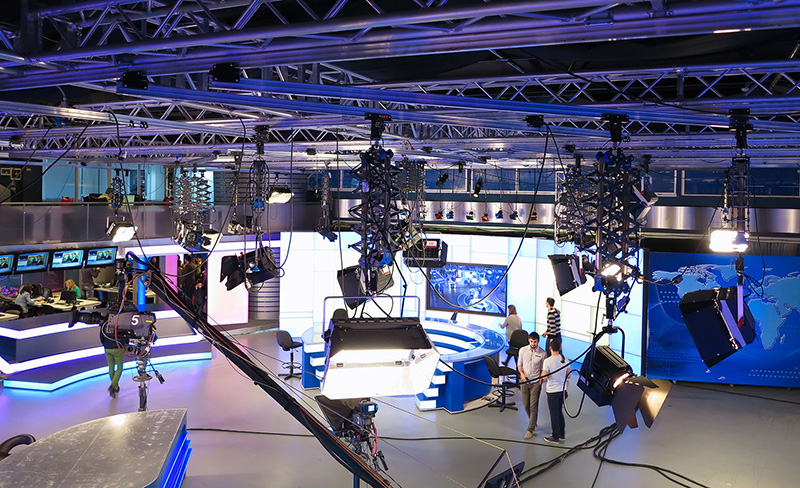Visually Speaking: Flat vs. flattering in television lighting design

Subscribe to NCS for the latest news, project case studies and product announcements in broadcast technology, creative design and engineering delivered to your inbox.
Let’s travel around the country visiting television stations. At a large number of these, we’ll find studios lit with banks of bi-axial fluorescent fixtures or incandescent luminaires with diffuse reflectors or multiple sheets of diffusion in front of their lenses. If the studio was relit recently, you might even find LED soft lights. It would not be unreasonable to ask why this approach has become somewhat ubiquitous. If the question was put to me, I’d have say, “I have no idea.”
That’s not entirely true. I do know why so many installations are set up this way. It’s not a lighting reason. It’s a marketing and sales reason. And that really irks me.
Flat diffuse lighting allows for easier designs with less equipment. That helps hold budgets down and profit margins up. If your set company is supplying the lighting it allows them to have a lighting manufacturer specify an adequate system and allows the set fabricator to concentrate on what they do best. And the client probably has no major complaints about the lighting. So far that sounds pretty good.
Was your initial goal “adequate?”
At first blush the diffuse lighting may seem wonderful as it “suppresses” wrinkles. On air talent love it because it helps hide the imperfections they stress about. Then two weeks pass. And it’s not so great anymore.
Those wrinkles are back. Actually, they were never gone. They were just different. And if anyone was paying attention, the detail in the cameras probably got raised because it all looked soft.
Makeup needs to be tuned up to be effective. More blush, more eye makeup, more cartooning.
“Do these lights make me look fat?” They might. They spread stuff out. Round becomes rounder or oval.
And it’s all sort of mashed potatoes. No lumps. Very consistent. Dull. Boring. Flat.
At this point you may think that diffuse lighting is a really bad thing. It’s not. Neither is specular lighting or any other type of light source. They’re just tools, like artist’s brushes. The trick is knowing which one works best for each part of the design and how to combine them to produce the best images. Unless you’re on a VR set, all your lighting instruments should not be the same. And if you are on a VR set the shaping of light for a huge green screen has its own set of challenges.
Besides illumination, lighting design has to describe time and place and position and space and mood. That’s all done by placing different values (highlight, shadow, mid tones, etc) so all the visual cues are right for the viewer. Get them right and the set seems spacious, the talent is authoritative, approachable and trustworthy and the entire broadcast has a discernible quality that reassures the viewer that they’ve chosen wisely. Get it wrong and at best the results are neutral. Viewers won’t be reluctant to shop around. Get it really wrong and many viewers will actively look for alternatives.
If that sounds like it might be a difficult balancing act to get it all right, it is. To keep it complicated, there are often numerous ways to approach and satisfy the needs of the broadcast and the design. Plus it all has to make physical sense in the space provided and it has to be controlled in a manner compatible with the station’s work flow and maintenance has to be reasonable and it can’t cost too much and… and…
So how does station management navigate this minefield? They hire experts in TELEVISION NEWS LIGHTING. There are broad categories and narrow specialties in lighting just like any other profession. A theatrical designer is not well versed in the nuances of live television and designers from episodic television and film shoot for the edit and post production but not for live broadcast.
Ask to see air checks from recent work. Inquire about the control systems and operational profiles on these projects. Ask at least as many questions as you would about your scenery or a new control room. Fixing bad lighting costs more than buying a good design to begin with. Your broadcast is going to live with the lighting design you choose for a long time. Much longer than two weeks. Making the right decision about who designs your studio lighting pays dividends for years to come.
Len Sommers
Angry Badger Productions
View more columns by Len on NewscastStudio.
Subscribe to NCS for the latest news, project case studies and product announcements in broadcast technology, creative design and engineering delivered to your inbox.




tags
lighting design, lighting for tv
categories
Exclusives, Featured, Lighting and Lighting Design, Voices